 1984 Volkswagen Jetta II Dimensions, Size & Specs
1984 Volkswagen Jetta II Dimensions, Size & SpecsMeasurements of the 1984 Volkswagen Jetta II, engineered for optimal performance and comfort
| Dimensions | |
|---|---|
| Length: | 4385 mm172.6 in14.4 ft |
| Width: | 1675 mm65.9 in5.5 ft |
| Height: | 1415 mm55.7 in4.6 ft |
| Trunk Capacity: | 575 liter20.3 cu ft |
| Weight Specifications | |
| Curb Weight: | 920-1035 kg2028-2282 lbs |
| Maximal permitted Weight: | 1400-1495 kg3086-3296 lbs |
| Tire Specifications | |
| Rims Sizes: |
|
| Tire Sizes: |
|
The Volkswagen Jetta II, produced from 1983 to 1987 and corresponding to the 1984 model year, is a compact sedan known for its practicality and balanced dimensions. With an overall length of 4385 mm (172.6 inches), a width of 1675 mm (65.9 inches), and a height of 1415 mm (55.7 inches), the Jetta II fits well within the compact sedan segment, offering manageable road presence and easy maneuverability in urban environments. The curb weight ranges between 920 kg and 1035 kg (2,028 to 2,282 lbs), while the maximum permissible weight spans from 1400 kg to 1495 kg (3,086 to 3,296 lbs), reflecting a lightweight yet sturdy build typical of Volkswagen vehicles of the era. Inside, the Jetta II impresses with a generous luggage capacity of 575 liters (20.3 cubic feet), making it highly practical for daily commuting or longer trips. Tire options include sizes 185/70 R14, 175/70 R13, and 185/60 R14, mounted typically on 13 and 14-inch rims, optimizing ride comfort and handling. This generation of Jetta delivers a solid combination of compact external dimensions with an efficient use of interior and cargo space, maintaining its legacy as a reliable and versatile sedan from Volkswagen’s lineup during the mid-1980s.
Discover the standout features that make the 1984 Volkswagen Jetta II a leader in its class
Have a question? Please check our knowledgebase first.
The Volkswagen Jetta II, produced between 1983 and 1987, measures 4385 mm (172.6 inches) in length, 1675 mm (65.9 inches) in width, and 1415 mm (55.7 inches) in height. These dimensions reflect a compact sedan design typical for the mid-1980s, balancing interior space and maneuverability. Its relatively modest width allows it to fit comfortably on narrow city streets, while the length provides sufficient cabin and trunk space. The height contributes to a lower center of gravity and better aerodynamics compared to taller sedans.
The curb weight of the Volkswagen Jetta II ranges from 920 kg to 1035 kg (approximately 2,028 to 2,282 pounds), depending on the trim and equipment level. Its maximum permissible weight spans between 1400 kg and 1495 kg (3,086 to 3,296 pounds). This lightweight construction aids in fuel efficiency and agile handling. The difference between curb weight and maximum weight indicates the vehicle's payload capacity, which includes passengers, cargo, and any additional accessories. The Jetta II’s weight parameters highlight its design focus on compactness and efficiency, making it suitable for urban and suburban driving.
The Volkswagen Jetta II features a spacious luggage capacity of 575 liters (approximately 20.3 cubic feet). This volume is substantial for a compact sedan of its era, providing ample room for groceries, travel bags, and other daily cargo. The trunk's design emphasizes practicality, often exceeding competitors in the same segment. This capacity allows for versatile use, whether for daily commuting, shopping, or longer trips, making the Jetta II a practical choice in terms of storage within its class.
The Volkswagen Jetta II supports rim sizes of 13 and 14 inches. Compatible tire sizes include 175/70 R13, 185/70 R14, and 185/60 R14. These specifications provide flexibility for owners regarding tire options for comfort, performance, and economy. The 14-inch setups, being larger, often contribute to improved handling and a sportier appearance, while 13-inch tires may prioritize ride comfort and cost-effectiveness. Always ensure to select tires matching these standards to maintain optimal safety and performance.
Yes, the Volkswagen Jetta II fits comfortably into a standard residential garage. With a length of 4385 mm (172.6 inches), width of 1675 mm (65.9 inches), and height of 1415 mm (55.7 inches), it falls well within typical garage size limits. Standard garages are usually around 2.4 to 3 meters (7.87 to 9.84 feet) wide and 4.8 to 6 meters (15.75 to 19.69 feet) deep. The Jetta II’s compact dimensions also allow for easy maneuvering inside confined spaces, meaning it’s well-suited for urban homes or apartments with typical garage sizes.
The Volkswagen Jetta II, introduced in 1983, is slightly larger and more refined compared to the first-generation Jetta I. While the Jetta I measured approximately 4175 mm in length, the Jetta II increased to 4385 mm (172.6 inches), providing more interior and trunk space. The width and height saw modest increments as well, enhancing passenger comfort and safety. This evolution marked Volkswagen’s effort to adapt to growing consumer expectations for compact sedans in the 1980s by offering more room and improved amenities while maintaining agile handling characteristics.
In comparison to its contemporaries like the Honda Civic (third generation) and Toyota Corolla (fourth generation), the Volkswagen Jetta II is competitively sized. Its length of 4385 mm (172.6 inches) positions it slightly longer than the Civic, which was around 4250 mm (167.3 inches), but comparable to the Corolla at approximately 4275 mm (168.3 inches). The width of 1675 mm (65.9 inches) aligns with these models, offering a similar cabin footprint. The Jetta II’s luggage capacity of 575 liters (20.3 cubic feet) often exceeded that of its Japanese rivals, giving it an edge for buyers prioritizing cargo space in a compact sedan segment.
The Volkswagen Jetta II was designed to offer comfortable seating for up to five passengers within its compact sedan frame. The increased exterior dimensions compared to its predecessor translated into more legroom and headroom for both front and rear occupants. The vehicle incorporated ergonomic seating, adjustable seats in many trims, and a practical dashboard layout aimed at enhancing driver comfort. Additionally, the large luggage capacity complemented passenger comfort by allowing ample storage for belongings, making it a versatile car for everyday use and longer journeys.
During its production from 1983 to 1987, the Volkswagen Jetta II came with several engine options, primarily gasoline-powered. These included 1.3L, 1.5L, and 1.8L inline-four engines, covering a range of power outputs suitable for efficiency-oriented and performance variants. The transmissions available included 4-speed and 5-speed manual gearboxes, as well as a 3-speed automatic option in some markets. This variety allowed buyers to tailor their purchase depending on their preference for fuel economy, driving engagement, or ease of use.
The Volkswagen Jetta II featured a front suspension with MacPherson struts and a rear suspension using a torsion beam axle, designed to balance comfort and stability. This setup provided competent handling on a variety of road surfaces with responsive steering and a relatively firm ride, typical of Volkswagen’s build philosophy at the time. The relatively low curb weight between 920 and 1035 kg (2,028 to 2,282 pounds) contributed to nimble maneuverability, making the Jetta II enjoyable to drive in urban settings and on highways alike. Overall, it was seen as a driver-friendly compact sedan providing confident road manners.
Discover similar sized cars.

| Production: | 1990-1997 |
|---|---|
| Model Year: | 1990 |
| Length: | 4400-4430 mm173.2-174.4 in |
| Width: | 1700-1715 mm66.9-67.5 in |
| Height: | 1390-1410 mm54.7-55.5 in |
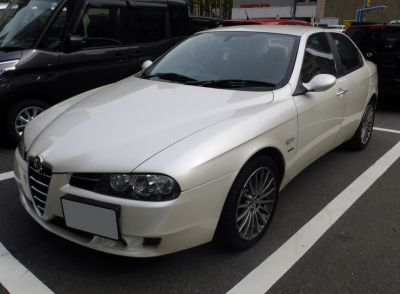
| Production: | 2003-2006 |
|---|---|
| Model Year: | 2003 |
| Length: | 4435 mm174.6 in |
| Width: | 1745 mm68.7 in |
| Height: | 1430 mm56.3 in |
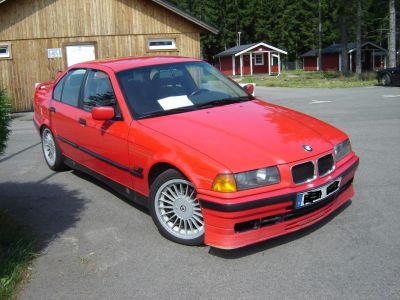
| Production: | 1992-1993 |
|---|---|
| Model Year: | 1992 |
| Length: | 4325 mm170.3 in |
| Width: | 1645 mm64.8 in |
| Height: | 1370 mm53.9 in |

| Production: | 1998-2005 |
|---|---|
| Model Year: | 1998 |
| Length: | 4400 mm173.2 in |
| Width: | 1720 mm67.7 in |
| Height: | 1410 mm55.5 in |
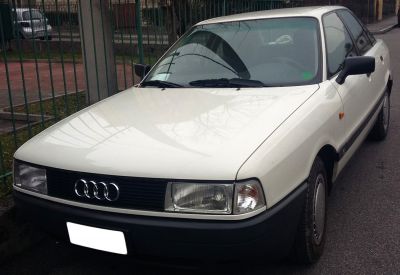
| Production: | 1986-1991 |
|---|---|
| Model Year: | 1986 |
| Length: | 4393 mm173.0 in |
| Width: | 1695 mm66.7 in |
| Height: | 1397 mm55.0 in |
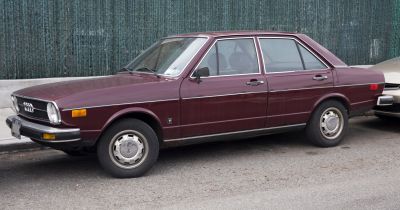
| Production: | 1973-1979 |
|---|---|
| Model Year: | 1973 |
| Length: | 4369 mm172.0 in |
| Width: | 1643 mm64.7 in |
| Height: | 1361 mm53.6 in |

| Production: | 1999-2005 |
|---|---|
| Model Year: | 1999 |
| Length: | 4466 mm175.8 in |
| Width: | 1743 mm68.6 in |
| Height: | 1462 mm57.6 in |
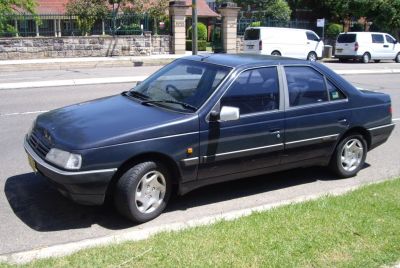
| Production: | 1992-1996 |
|---|---|
| Model Year: | 1992 |
| Length: | 4408 mm173.5 in |
| Width: | 1694-1714 mm66.7-67.5 in |
| Height: | 1390-1406 mm54.7-55.4 in |
